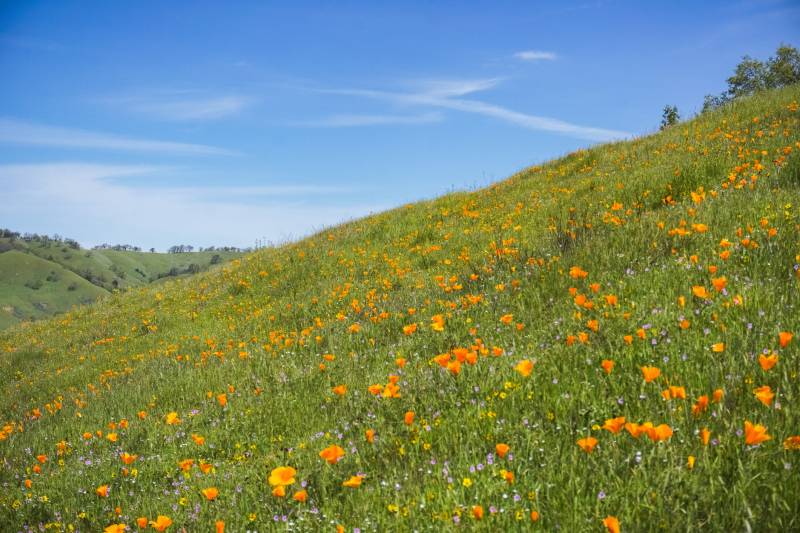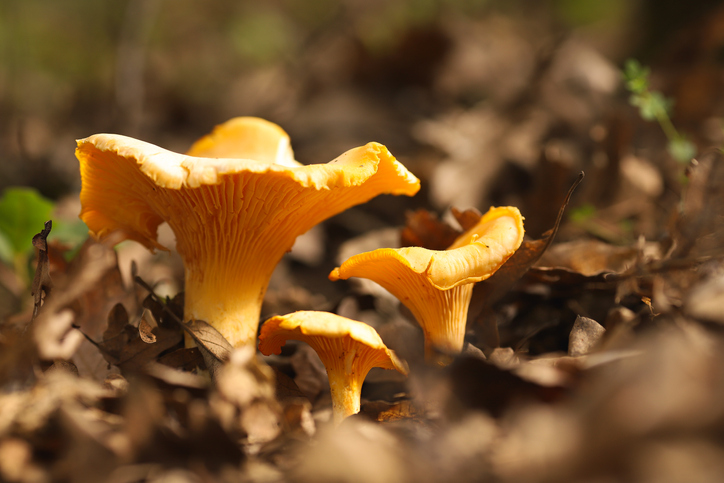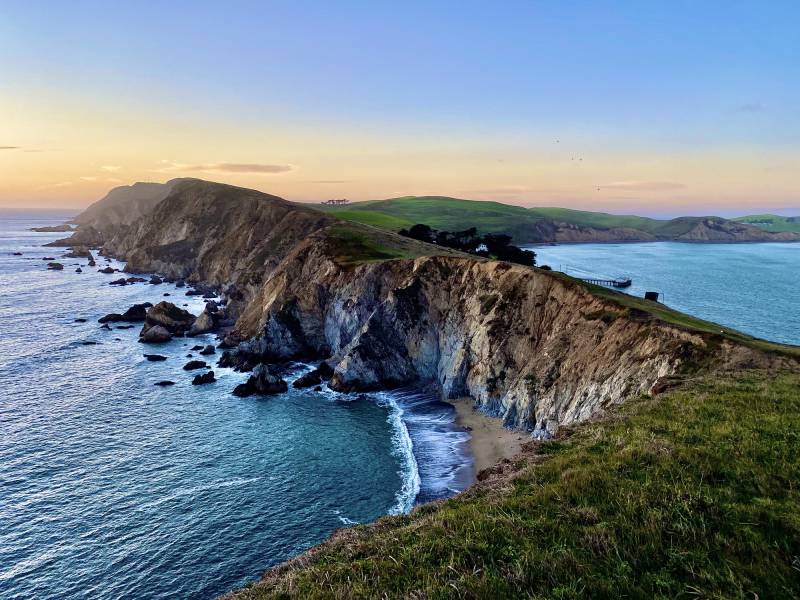Thekkath recommends a number of places to see wildflowers starting to bloom around Santa Clara and San Mateo counties, including:
 California poppies in a field. (Sundry Photography/Getty Images)
California poppies in a field. (Sundry Photography/Getty Images)
Right now, Thekkath said, you’ll see a lot of different species of poppies, lupines, fiddlenecks and goldfields. But compared to this time last year, we’re seeing only about 50% of the species blooming, since last year was a drier and warmer winter.
That said, Thekkath assured KQED Forum listeners, people can still expect more spectacular blooms all over California because of the colder winter this year. They’re just … slightly delayed.
Thekkath reminded listeners to stay on trails and not step into meadows, which can cause tremendous damage you can’t see. You’re not just threatening the millions of seeds lying in there, waiting for the right moment to germinate, but you could also be “destroying bees, caterpillars, butterflies and insects that rely on these wildflowers to support our local ecology,” she warned.
Want even more wildflower hike tips? Read our full guide, “Where to See Wildflowers Near You in the Bay Area.”
Where to see mushrooms sprouting
The wet year has also extended the mushroom season.
“Normally this time of year, it would be at the end of the season,” J.R. Blair, amateur mycologist and retired lecturer in biology at San Francisco State University, told KQED Forum.
Blair said that right now, you’ll be able to spot chanterelles, which have begun to sprout earlier. People should also be looking for yellowfoots and black trumpets, two really good edible mushrooms that can be found fruiting in numbers.
 Three chanterelle mushrooms in the forest. (Tsvetomir Hristov/Getty Images)
Three chanterelle mushrooms in the forest. (Tsvetomir Hristov/Getty Images)
Blair recommended visiting places like Point Reyes National Seashore and Salt Point State Park, which allow mushroom collecting in limited amounts. He reminded people to be sure to check the park websites for any closures.
Never gone foraging before and want to try it? Blair advises going on trips with local mycological societies, where you can learn from people who are more knowledgeable — and, most importantly, who can teach you how to identify the mushrooms you definitely should not eat.
“What you need to do, in essence, is to not only learn the characteristics of the edible species but learn the characteristics of the poisonous lookalikes,” said Blair.
The hikes that offer the ‘3 W’s’: Wildflowers, wildlife and wows
Brad Day, publisher for WeekendSherpa.com, recommended that KQED Forum listeners head out to Sunol Wilderness Regional Preserve in the East Bay to see some tremendous wildflowers blooming right now. Specifically, he recommends you register for the guided wildflower walks in the Little Yosemite area (PDF) as a great way to learn about the local fauna.
The Canyon View Trail to Little Yosemite brings you through beautiful woodlands and hills, with serene canyon views and a lush stream. Be sure to check out the website for closures and parking fees.
 Point Reyes National Seashore from Chimney Rock Trail at sunset, in the winter of 2021. (Conrad J Camit/Getty Images)
Point Reyes National Seashore from Chimney Rock Trail at sunset, in the winter of 2021. (Conrad J Camit/Getty Images)
Chimney Rock in Point Reyes is another spot Day recommends. He says such places have the “three W’s” going for them: “It has the wildflowers, has the wildlife and it has the wowing views,” said Day. And once we get some warmer weather, there will be a bounty of wildflowers at Chimney Rock through the spring.
Also, from January through May, there’s a chance you might see migrating gray whales as they head up to Alaska. “In the spring, they usually have had their babies or their calves, so they’re sticking a little bit closer to shore,” said Day. “So your chance of seeing them are a little bit better.”
Plus, Chimney Rock is a great place to spot elephant seals. Overall, said Day, Point Reyes is a great place to see a combination of all the wonders of spring.




















